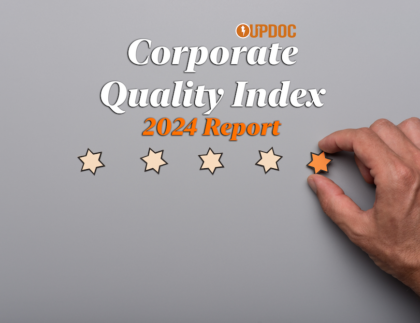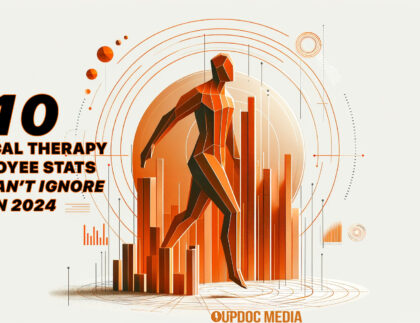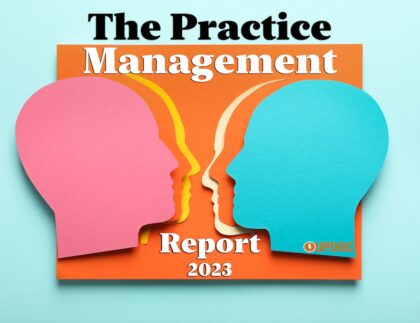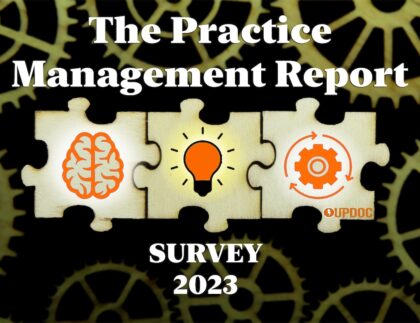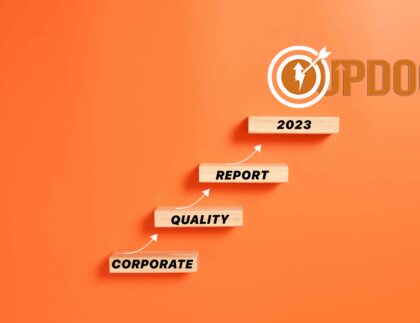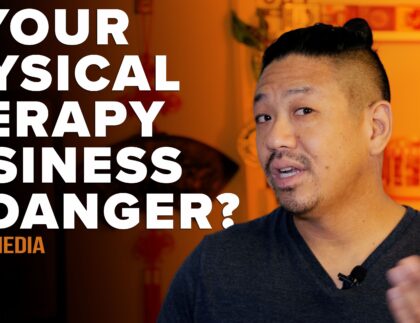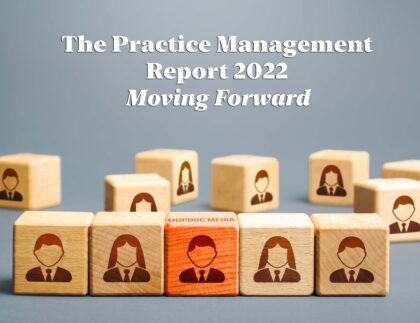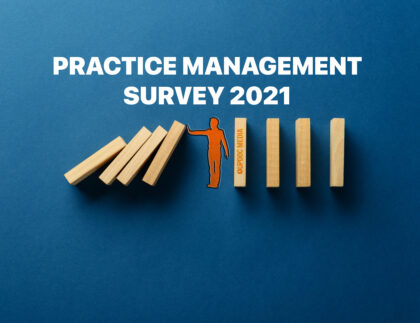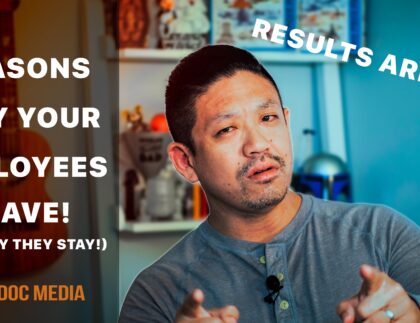
But, before we get further along… let’s lay out some ground rules.
Well… not exactly. Here’s how it goes.
The Graham Sessions Origin Story
11+ years ago, three PT colleagues got together after a conference session and realized, there needs to be a session where colleagues can just — talk, converse, share ideas, be disruptive, be controversial… while remaining professional, respectful, and most importantly… constructive in nature. (basically the opposite of everything Twitter was in 2017; and, used to be back in the early 2010s — hilariously, this effect was actually mentioned this year)
Essentially, Graham Sessions was created to be a safe environment for an open forum. It’s purposefully controversial, disruptive, and spawns innovation. There’s no hue of coloring colleagues as “too young” or “inexperienced” or “so important that…” or “you know who that is, right?” — all which leads to the beautiful environment that is cultivated: A civil forum without decorum.
There are basically only two rules to follow:
- What you talk about is OK to share.
- Who said it? NOPE!
And, that’s a foundational idea behind the event. All too often, titles, positions, degrees, accomplishments… all these pour on all sorts of biases when a statement is expressed with such context. However, at Graham Sessions, attendees don’t represent a company, their title nor position… they represent themselves. In fact, outside of Private Practice Section elements, most name badges do not have any true identifying details. I plainly attended as “Ben Fung.”
AND, believe me when I say… there were definitely people in high order to be respected. Organizational leadership, large company executives, top ranked influencers… they were all there; and, they were all there as themselves. The result: No idea was greater than another, merely because of who said it or what entity they are affiliated with.
There’s no recording at Graham Sessions. The hope is to spread ideas at our home bases through conversations with actions taken — and, many actions have been; with many of the last decades of progress having some ties to Graham’s.
Historically, this had been some what of an invite only event. In recent years, attendance has freed up a little bit, to allow for more outside thought to join the fold, keeping true to the spirit of Graham Sessions. The conference has also taken place in vintage hotels. This year, it was at the US Grant Hotel in San Diego.
Finally, the format. The format of the sessions is typically speaker/panel presentation and public response. There are multiple microphones laid throughout the conference room that hosts a hundred people or so; once the presentation is finished, a moderator welcomes any open thoughts, follow up thoughts, rebuttals, challenges, collaborations, tangential topics… it’s all fair game as long as the etiquette is preserved. That, is pretty cool… especially since most conferences have their attendees being spoken at, rather than attendees encouraged to become part of the conversation and spoken with.
Oh! Why is it called “Graham Sessions?” Well, one of the 3 individuals was a fellow by the name of Patrick Graham. They coined it “Graham” because they wanted it to sound like “Jam” sessions… however, no other name came around to replace it and the name stuck. PS. This is the one name I’ll drop for this blogpost; and, we were all assured by the forum moderator that he knows we didn’t name the sessions after him, officially… that is 😉
All the paraphrased discussion points and quotes below are exactly that. Names are intentionally left out, as well as any meaningfully identifying descriptors. These are the dialogues of your physical therapy colleagues.
This Years Happenings: Topics, Themes, and “What I Believe”
There’s a wonderful thematic segment called “What I Believe” which is threaded throughout the Graham Sessions. Speakers are invited to share their thoughts on any number of passions. So, without any true organizations and certainly without any identifiers, here are some (admittedly) out of context highlights from the entire event — in the form of both statements and questions as posed by attendees. And, yes: much of this is paraphrased to protect the individual who shared their respective thoughts.
HAVE ASSOCIATION GROUPS BECOME REDUNDANT?
There are an incredible amounts of academies, special interest groups, sections, etc. etc. etc. within the APTA organizational latticework. Is this causing us more harm than good? Would it be better to merge or even dissolve some of these groups?
Is the Private Practice Section (PPS) better served to be named the Business Section with a Private Practice subgroup from within? Currently, PPS has the highest concentration of business minded physical therapists. But, what about all those managers, directors, executives from inordinately large companies that would not only benefit from joining, but could further benefit our profession from being welcomed into this community?
There’s always a place for competition as there is for collaboration. The suggestion was made: Compete over end-user experience. Collaborate over shared resources.
APTA’s governance needs revision. The organization as a whole has a $46 million dollar budget. The majority of the governing body (the House of Delegate, HOD) have roots in education, outpatient, and/or from private practice. Therefore, the HOD doesn’t exactly represent the entire spectrum of its physical therapy colleagues… yet does. The chain of authority is oddly stacked to the HOD; from the HOD comes the board who tasks the staff. Yet, if the board wants to go in certain directions, the HOD can overturn the board’s directives. There is also no public member on the board — how can we transform society without having a member of society join our decision making bodies? There is a status quo problem within the HOD. Most HOD members have over 10 years of experience within the house and there exists a codified problem through house bylaws by nothing can change except for within the house for which the majority of members have no incentives to make, due to the ultimately power residing in the house; giving little actionable power to the bodies and organization tasked to take action for change.
Digital Healthcare -and- SOCIAL MEDIA = Word of Mouth 2.0
We need to make valuable connections and create helpful content, laid before the eyes of the consumer — for free! This is the power of social media.
Per a physician’s perspective: A physical therapist harnesses a person’s strength, recovery, and understanding of the body to bring clouds of comfort in the midst of uncertainty. This is powerful. Anxiety and pain is often the entry point for such patients.
There is an illusion of increased quality with an elevated service experience within healthcare.
Technology should improve the “intimacy” and closeness of patient care; this is a precious thing as it creates trust in crisis.
A digital visit can build trust before, during, and through subsequent virtual health encounters — especially with common and otherwise easy to manage groups and conditions.
The digital space is the broker of increased scale of touch to the patient experience.
“How many of you are private practitioners?” [Easily 1/2 the room] “Keep your hands up if you rely heavily on word of mouth marketing.” [Everyone keeps their hands up] “Social media is Word of Mouth 2.0. USE IT!”
Social media isn’t what it used to be. It’s too clouded and crowded. Keep your eyes on channels such as WeChat, LINE, other unified platforms. American social media experiences are likely to follow suit.
What is our brand as PTs? — said out loud, many times.
We need to create content to fill the vacuum of PT. At present, trending PT Twitter conversations were a not-so-positive, nor appropriate “dialogue,” insulting the profession’s clinical competency in a some what less than thinly veiled attempt at selling continuing education courses.
QUESTIONING THE STATUS QUO
Managed care was mentioned in the historical decrease of value for the physical therapy profession within healthcare economics. Over the course of the evolution of healthcare economics, the game became a down-bid game where practices would “compete” over bidding for less visits, less payment per visit, and so on… until they felt the payers would finally say, “Yes.” THIS NEEDED TO STOP 20 YEARS AGO!
Questioning the quality of physical therapy care at large: Is hands on that good? Is it even necessary per visit? Are we truly helping? Is the visit more important, or the final destination of care?” In fact, we know for a fact, computer models can make better differential diagnosis decisions than a person. However, we need the person to filter the nuances of the human experience. These should operate in partnership!
Sadly, what we can do best in physical therapy isn’t always what is best for our businesses.
We NEED to dominate population health as a fee for value model and integrate the episodic payment approach. Only then can we ditch fee for service which is always a downward spiraling game.
Practitioners, clinicians, owners, managers, and all stakeholders NEED to push payers to move toward episodic payment of OUR DESIGN. In fact, most payer communities don’t know how to move to fee for value in an effort of saving their own financial interests from the failing fee for service model. WE MUST LEAD THE CHARGE.
To make such moves, we must take on the financial risk to move payers off the status quo ledge; even starting at offering a 5-10% with-holding at risk, to demonstrate our true value. [To which, it was later mentioned, the value of two back surgeries prevented in the Emergency Department by a Physical Therapist would pay for that PT’s salary for the entire year and then some]
It takes a macro approach to move the needle.
Questions in challenging the status quo: “What can we do more, digitally?” “What can be done at distance or virtually?” “What must be done, face to face?” — Then, we craft a value based model, based on our own determinations, burden of risk, and benefit to payer and patient… which will then generate value, as well, for provider.
PATIENT PERSPECTIVES and HEALTHCARE ECONOMICS
Patients are looking for ways NOT to see their providers.
Digital channels enhances care between high touch visits; telehealth/virtual health is NOT an all or nothing process.
Payers are also patients; reimbursement is the not the winning battlegrounds.
Consider the Customer Lifetime Value (CLV) in community care vs. episodic care, population health and digital care vs. clinical, hand on. Where is the true value in decreasing the economic pressures of healthcare costs vs. elevating the human experience of our stakeholders?
Direct Access is a 55 year battle we have yet to win. Fighting insurance for better payment is a sinking ship. GO TO THE PATIENT! [aka. stop the insanity of fighting age old battles with payers; collaborate with the patient — the end-user consumer who determines where the dollars, ultimately go]
If we TRULY want to elevate our profession’s value, consider this: We need firm dollars and numbers to show that seeing a Physical Therapist before any other provider for all things musculoskeletal CREATES SAVINGS. This will and is being found in DATA SCIENCE. It comes down to Dollars per Member per Year if we get people off (1) opiates, and (2) decrease cost per member. This is the LANGUAGE of payers.
Payers are looking at measures that we are likely NOT LOOKING AT, in our immediate settings. They care about the entire pool of beneficiaries across their customer life cycles; fall risk, diabetes, obesity, elder care measures, hospitalization rates… THINK LARGE and indirect to usual orthopedic, in-moment/point-of-care measures.
We have over-medicalized physical therapy. Artificial Intelligence is already here; it can do any form of medical decision making, better than any clinician in any discipline. What we, as physical therapists do best, is the Physical Exam — we’ve had to and we continue to because that is all we have ever had. We didn’t get access to labs or imaging; we take extensive histories, physically touch & examine our patients, and take time to get to know them as people.
Question: Does a diagnosis change your clinical decision or plan of care?
Data. IT’s here. It’s dirty and sexy; you should get to know it and caress it as often as possible.
NEWS FLASH: Payers are and have always been watching INDIVIDUAL PHYSICAL THERAPISTS; tracking treatment patterns, outcomes, documentation and billing patterns… all of it. They will soon be able to weed out who is truly a good provider by THEIR definitions… and, who is not. And, unless we join the conversation based on the larger data sets of population health outcomes… we will be once again redefined by the perceptions of other parties.
ON THE DPT & THE FUTURE OF OUR PROFESSION — THE STUDENTS
The debt we are saddling our students with is unconscionable and threatens the health of our profession.
Why does it cost so much?
What are YOU doing to decrease the financial burden to the physical therapists you are releasing into the world?
To decrease costs of education, this must occur at the program level.
Can you tell YOUR CHILD to be a physical therapist, today?
There have sadly been ZERO STUDIES investigating the impact of the Doctor of Physical Therapy degree on the Physical Therapy profession… none.
The Net Present Value (NPV) of the Doctor of Physical Therapy degree was compared to 16 other healthcare and health related professions. We are at the bottom, only slightly above the Doctor of Chiropractic and the Doctor of Veterinary Medicine. We are dangerously close to making the DPT as low and as close to the value of a general Bachelors Degree within the greater job market. NONE OF THIS information will be public until programs, educational bodies, and organizational entities practice true TRANSPARENCY.
The same goes for residencies, fellowships, and other specialty programs given by practice entities and educational institutions as such operations are seen as “cash cows.”
Theme: The costs in becoming a professional, disturbingly mirrors the stagnancy in our governing bodies — all highly influenced and commanded by those who hail from academia and who command the supply of employment.
SHARK TANK PT
This session within Graham’s was created to have novel and innovative practice models be shared, challenged in a public forum, and grilled by a panel of would be investors. It is worth saying that it was the job of the “sharks” to be skeptical, hence taking up a leaning toward turnkey style investments. It is also worth saying that much of the audience had overwhelmingly positive reactions to these pitches.
Emergency Department Physical Therapy Practice. This model tends to be a burden to an acute care rehab therapy department as it is accounted for as a cost to the admission. HOWEVER, if organizationally administrated through an external contract or outpatient cost center, such services can become revenue generating centers that not only add value to the financial ecosystem; it is a great relief to the patients who are “stuck” in the ED for 2, 3, 4, or something 5 or 6 hours at a time. An additional provider, especially reaching out to the great segment of musculoskeletal admissions to ED — this not only offloads some of the burden from disinterested emergency physicians, this also helps funnel patients to the right next provider in the flow of healthcare acuity.
The Hybrid Practice Model. Whether its SoulCycle, CrossFit, Yoga, Pilates, or Martial Arts — community driven fitness activities have an inherently higher level of customer loyalty and consumer engagement. After all, only 7-8% of the general healthcare consumer population will ever know of or receive treatment from a Physical Therapist. However, the vast majority of the general public know names such as CrossFit or Mixed Martial Arts (MMA). Whatever the fitness model, it is proposed to be much more efficacious to reach out to the other 90% while continuously capturing the 7-8%… sometimes the deemed “10%” as an easy number, to truly become a physical therapy brand of the communities around us. However, it was well worth stating that the attendees… didn’t exactly have a popular culture viewpoint that was favorable to CrossFit… still, they all knew what it was. AND, all had priorly agreed that forming up against the battering ram to pound away at gates such as direct access, therapy caps, and declining reimbursement are failed strategies — the irony. Or, perhaps not.
Concierge Cash PT. Concierge or concierge like health services are amazing. The providers come to the patient for a premium on access, point of service, or both. There is high demand for this in regions of affluence, high paced lifestyle, and when “time is money” doesn’t even begin to describe the scarcity of every second of every day. Such descriptions typically are congruent with heavily urbanized and commercialized areas, communities which are a metro unto themselves. Nevertheless, such a model can create equitable revenue per clinician by only seeing a handful of patients a day rather than the common 15+ patients per day of “traditional models.”
DIVERSITY
I feel this deserves its own blogpost series, unto itself. There was so much in this particular session that I couldn’t jot down the happenings fast enough.
The truth is this. Diversity isn’t a comfortable topic. It shouldn’t be. That’s the point. So, with that, I encourage you to read on and challenge yourself the way your colleagues did.
We had a truly courageous panel and moderator covering, for what seemingly was for the first time within a conference representing our profession, a true exploration into the depth of societal issues in diversity and inclusion — beyond the obligatory “Yes, it’s an important issue.” There was some apprehension in a full open forum, so it was suggested that smaller groups be used to facilitate further discussions. Thankfully, and to the credit of the group, it was then suggested that the full forum be open — and, it was to the relief of the panel, moderator, and all the attendees. Again, I could probably write a series of blogposts on just this part of the conference.
I’ll simply say this: If the type of discussions had is representative of the coming progress in our cultural development as both a profession and as a society — hope lives on, in wondrous strength. I did my very best to keep up with the discussion. Admittedly, it was emotional for me. So, without further ado… here are some meager highlights I’m able to recall, with many other thoughts shared via Twitter #GrahamSessions2018.
IMPLICIT BIAS: Our biases do not exist on a binary.
“I’m color blind” and “I don’t see color” is sadly an indication of how much you do. The science is this, EVERYONE HAS BIASES. By acknowledging this, you rob bias of power. Bias and how it comes out in the workplace, in economics, and throughout society is terribly oppressive and expensive.
This, is a 1 trillion dollar problem per year; in lost income, law suits, crime, etc.
There’s also a 60 billion dollar racial disparity as a result.
Consider the two implicit bias studies… which may not seem so implicit once you understand it. First, the Harvard study asking you to merely click on faces (seemingly Caucasian vs seemly African/African-American). The results are staggering and you can find it HERE. [PS. I just retook one of the newer test segments; it’s a lot of fun and quite revealing — I first came across this study back in undergraduate courses in Social Cognition). The second, is the resume study. Two identical resumes were given to hiring managers — the results were this: The more “white” sounding name got a 50% likelihood ratio increase of getting an interview than when compared with a presumably “black” sounding name.
We need to move into inclusion as part of how we practice diversity.
85% of physical therapists are white. 50% of medical doctors are white. Over 60% of Graham Sessions attendees were white, older males. “Asian” and “Black” attendees combined appears to be less than 10 out of the hundred plus total attendees. How will Graham Sessions look in 10 years? Will this distribution change?
The key to diversity of acknowledging your bias. WE ALL HAVE THEM.
The worst thing to do as a provider is: “Oh, I just assumed…” This attitude is devastating to the impact of their plan of care.
We need to make diversity about care and connection. This is the core of who we are as Physical Therapists. This is where we are at our best. It’s on us to behave this way.
We must individually live out our own truths. We must collectively welcome and include others.
There’s a duty to make physical therapy attractive to minorities.
Ageism is a problem in Physical Therapy. Not toward our patients. Toward our colleagues… as if new grads are “cute” for their “energy” and “enthusiasm.” But, “they’ll get it” once they realize “this is how things are.”
Regardless of nationality, ethnicity, heritage, creed, religion, sexual orientation, gender, or otherwise… diversity happens when we are aware of biases, actively include others, and adopt a renewed mindset beyond awareness — it must be an intentional mindset based on action.
The above were the best anonymously represented topics and spoken dialogues of your colleagues at Graham Sessions 2018.
Reflections
I can’t wait for another opportunity to attend Graham Sessions. It was inspiring, challenging, growth oriented, emotional, and a great example of what our profession could be en masse… if we only have the courage to listen to each others ideas and act upon it. In many ways, I wish the diversity session could’ve been broadcasted; the engagement and interactions of differing views — AND, the acceptance BECAUSE of our differences within the group was a commendable and inspiring thing.
I believe… that we really need to put our money where our mouths are. We keep saying that certain things are age old battles that we’ve never won and never will win. So, why keep pouring money down those battle lines? Why not hold… and, deploy on the flanks… in the areas where we have yet to make a true concerted push. Direct to consumer. Direct to the marketplace. Using models that are not standard, customary, or traditional. Why not???
I also believe… that as a culture and as profession, we would do well to benefit from learning from the format and etiquette of Graham Sessions. I think this would pay dividends in the growth of our profession and the elevation of our conference experiences.
Ultimately… I believe that there is far more hope and far more ways to win in Physical Therapy than has historically been mapped out. We don’t just need change. We need re-imagination of who we are, who we can be, who we should be… and, how we are — to the people we serve.
